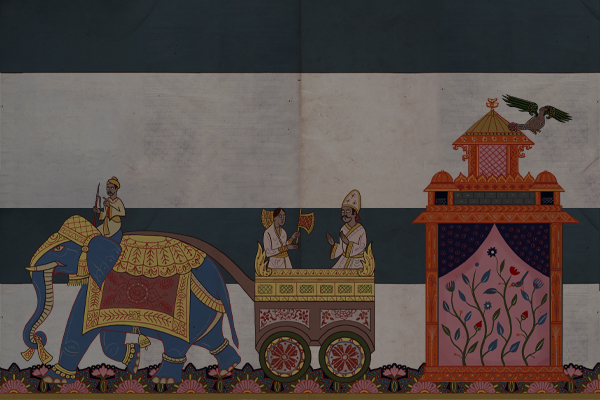With a powerful army at their disposal, the generals of Emperor Charles V sought, like Rambos of the Renaissance, to vanquish their Ottoman enemies. But as we shall see, things did not go exactly as planned.
The plan conceived by the Christians was very simple: since their strength was based on impact, the captain decided to advance pure and simple towards the enemy to seek the melee. A subtle plane, as we can see. The problem is that the Ottomans were even more subtle! Using the most of their firepower, the Muslims would try to shoot at the Christians in order to break them.
Aiming their artillery in order to create a "killing field" in the center, the Ottomans used the cavalry on their left flank and in a flank march coming from their right. The infantry (including the terrible Janissaries) was placed in the centre and the right.
The Imperialists put their heavy cavalry (gendarmes and celadas) on their right along with a few Stradiots. In the center were two large Landsknechte regiments and on the left, two Tercios, one Spanish (superior) and another Portuguese (elite, of course!), supported in the rear by mounted arquebusiers.
The Imperialist advanced at full speed. On their right flank a fierce fighting between the cavalry ensued, but a flank march on the left flank tipped the scales in favor of the Ottomans.
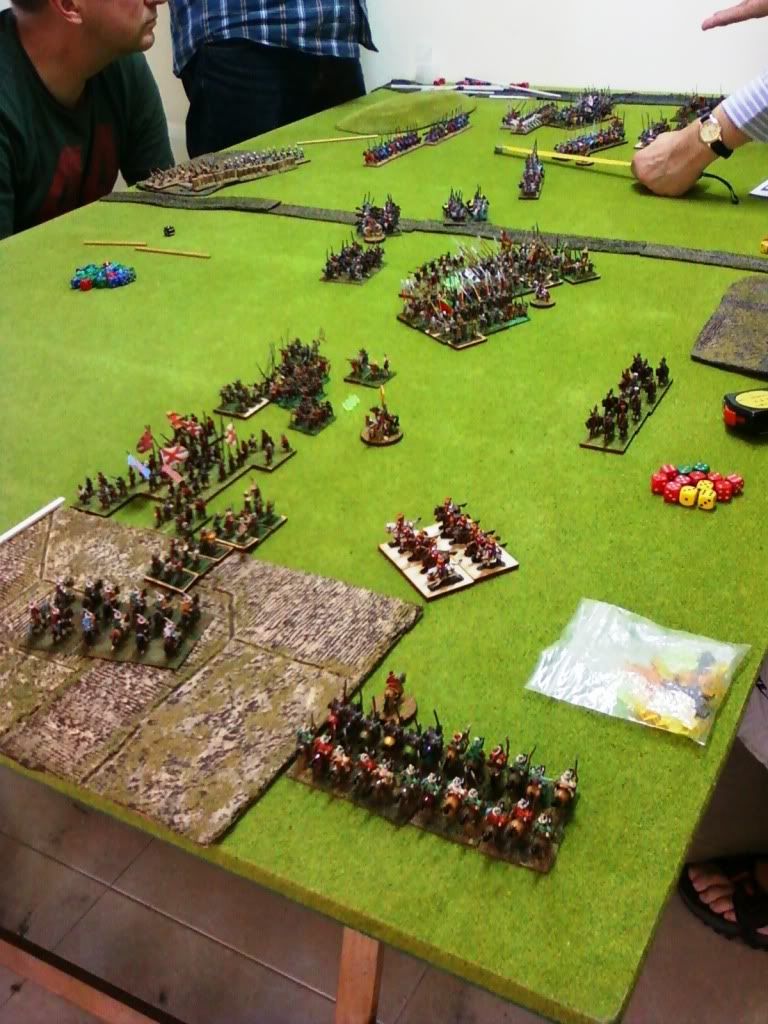
The well-aimed Ottoman batteries prepare to open against the Spanish Tercio.
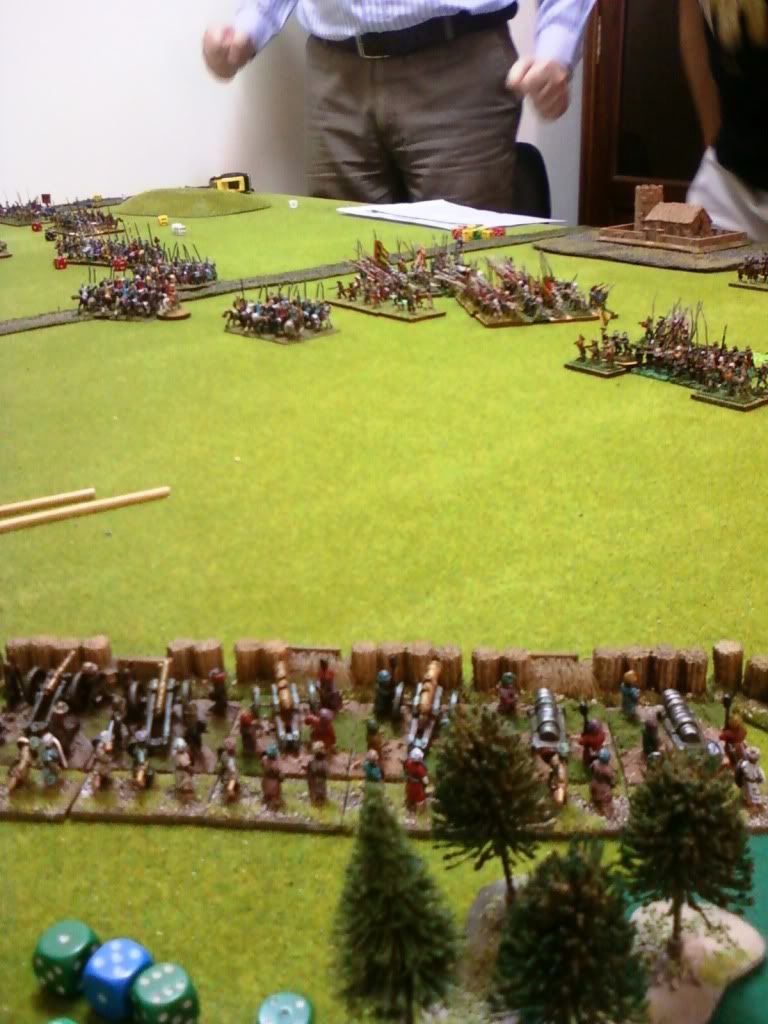
And here are the Tercios who, step by step, flying flags, advance towards their destiny ...
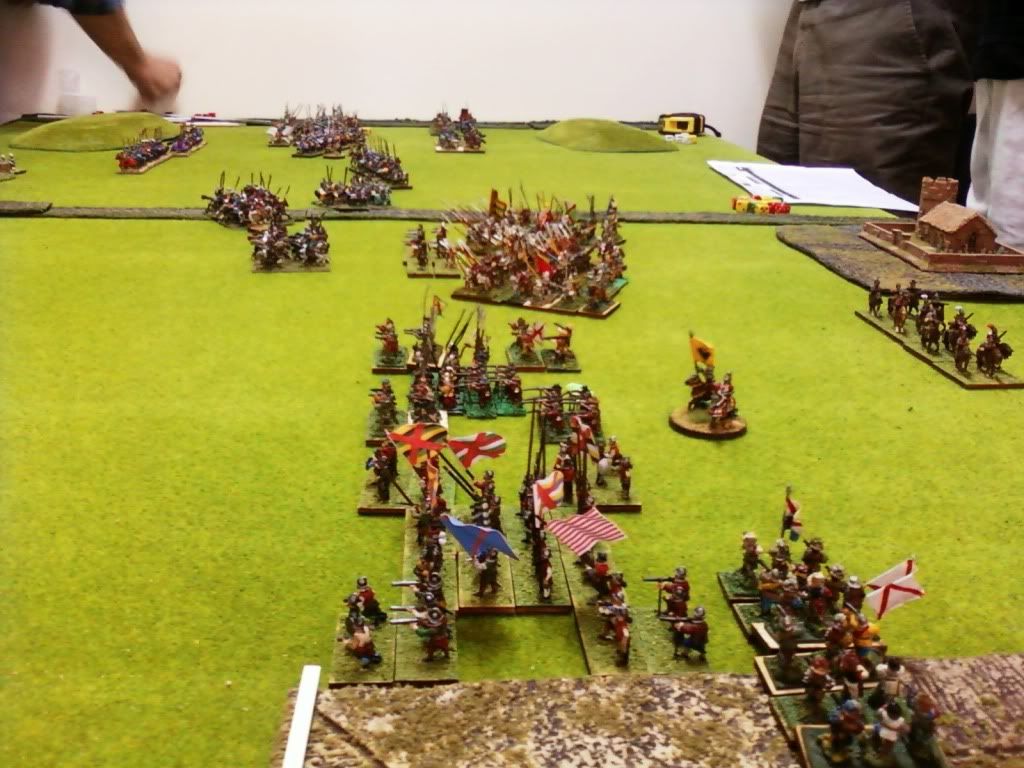
The battle was nearing its end. In the center of the battlefield, the Landsknechte regiments, doing sprints, tried to catch the Ottoman cavalry, who was always able to escape faster. In the Imperialist right, the Spanish cavalry was more successful and virtually annihilated its Turkish counterpart, but the Imperialist left flank ... flank?! Which flank?!
Confronted by the Ottoman cavalry, the mounted arquebusiers gave their best but were quickly slain. The Spanish Tercio nearby, under constant artillery fire, also broke and fled. What else could be expected?
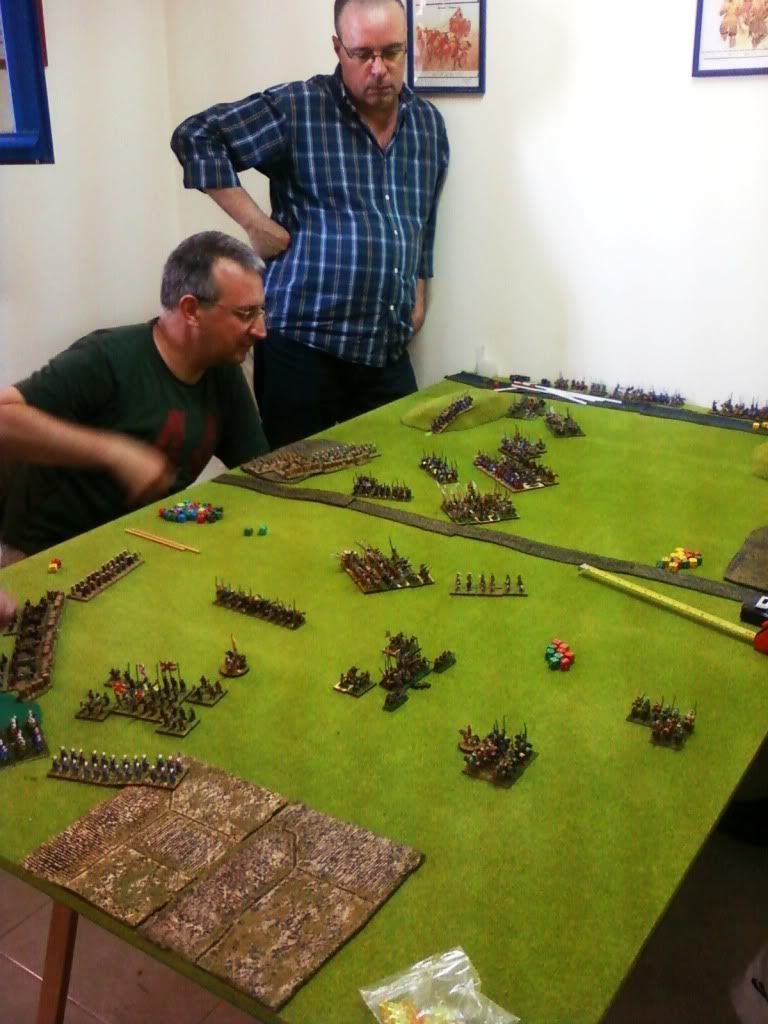
Thus, in the Imperialist left flank, the only unit that was left was the Portuguese Tercio. Previously attacked by the Ottoman cavalry, which was promptly cut off, the Portuguese continued their advance until they came at distance shot of the Janissaries.
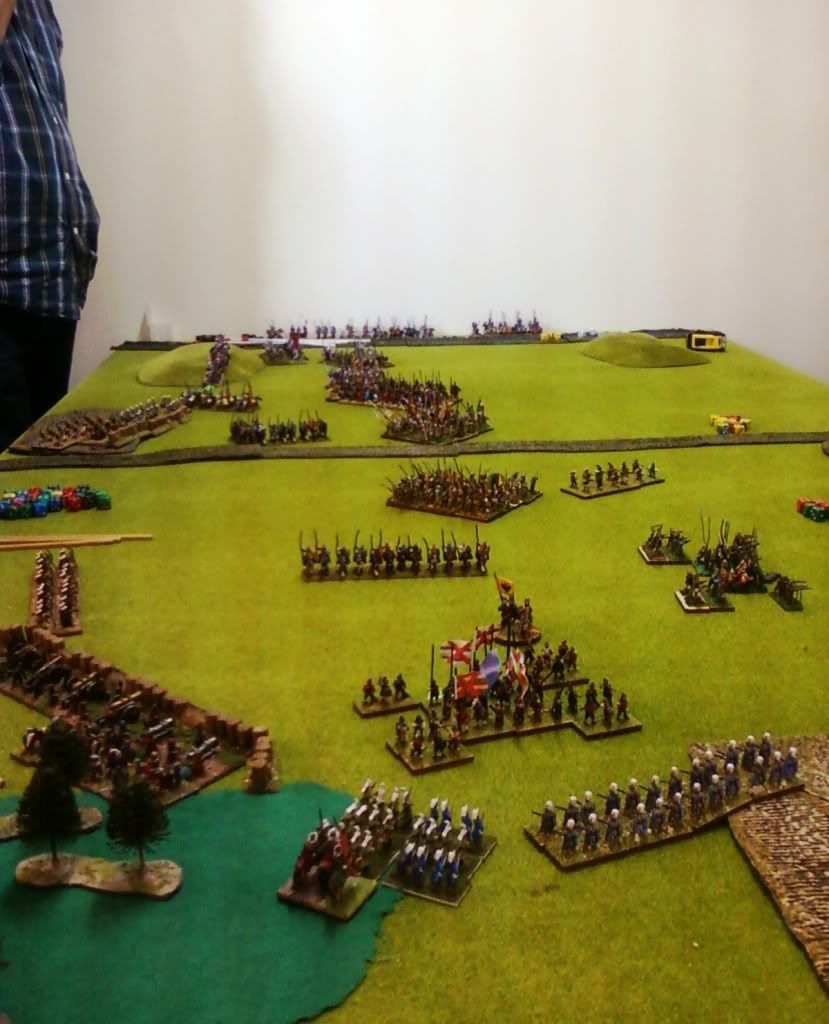
But the impressive amount and accuracy (ie, the dice outcome!) of the Turkish arquebuses quickly got the better of the Portuguese so these decided for the melée where they hoped to have a better chance. In vain. The Turks kept the upper hand and the Portuguese kept losing base after base and coherence tests.
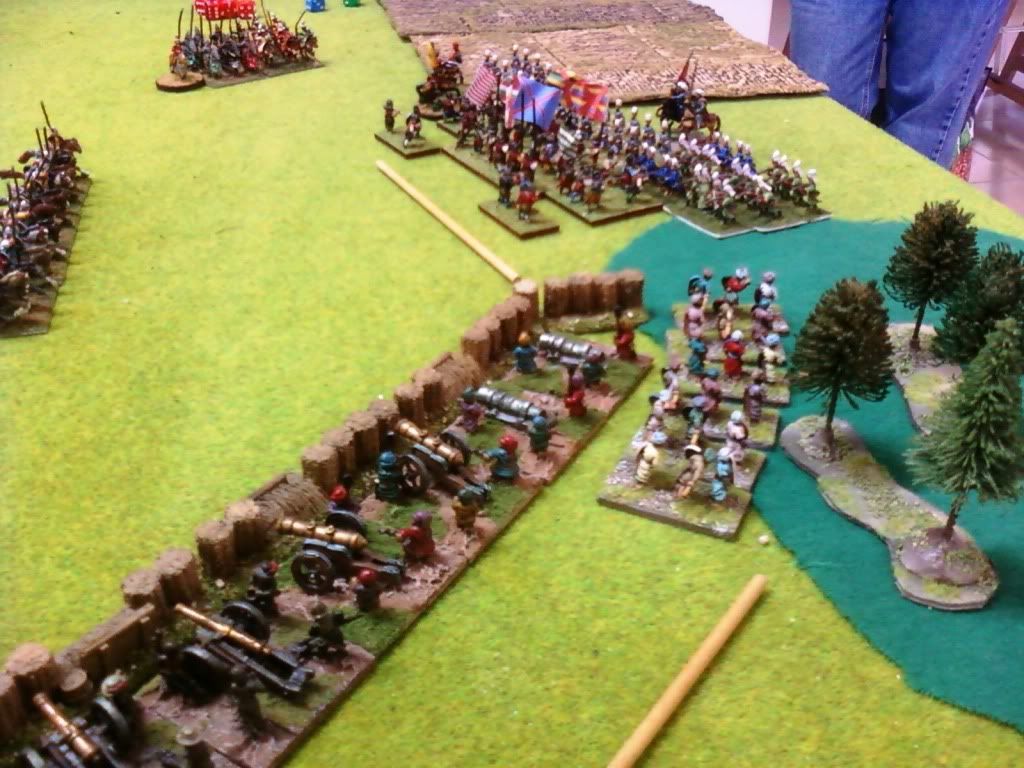
By this time, the Ottomans felt it was time to eat the five o’clock kebab and therefore conceded the Imperialists a defeat. These, relieved to be able to return home, not quite in one piece but at least still sufficiently alive to realize it, accepted the Ottoman terms and gave the victory to their opponents.



